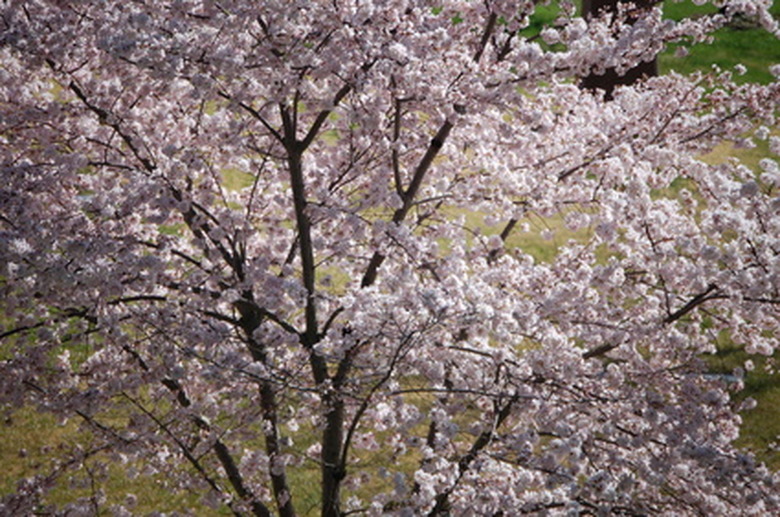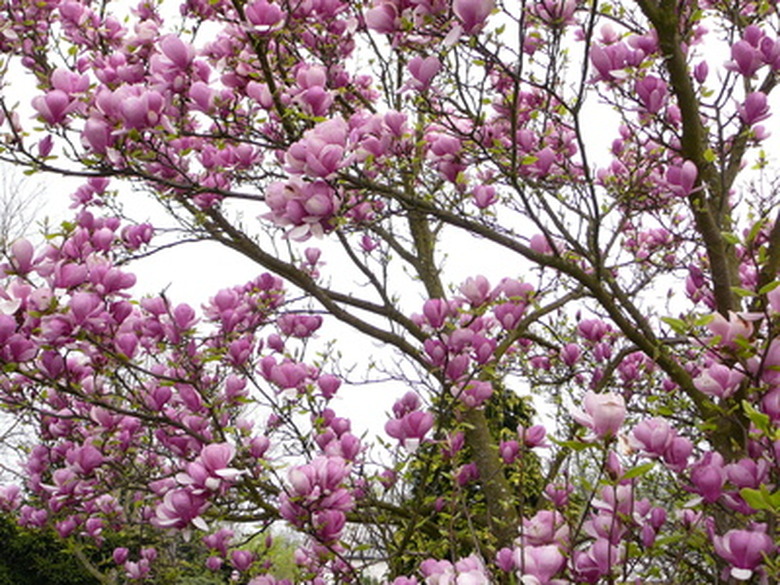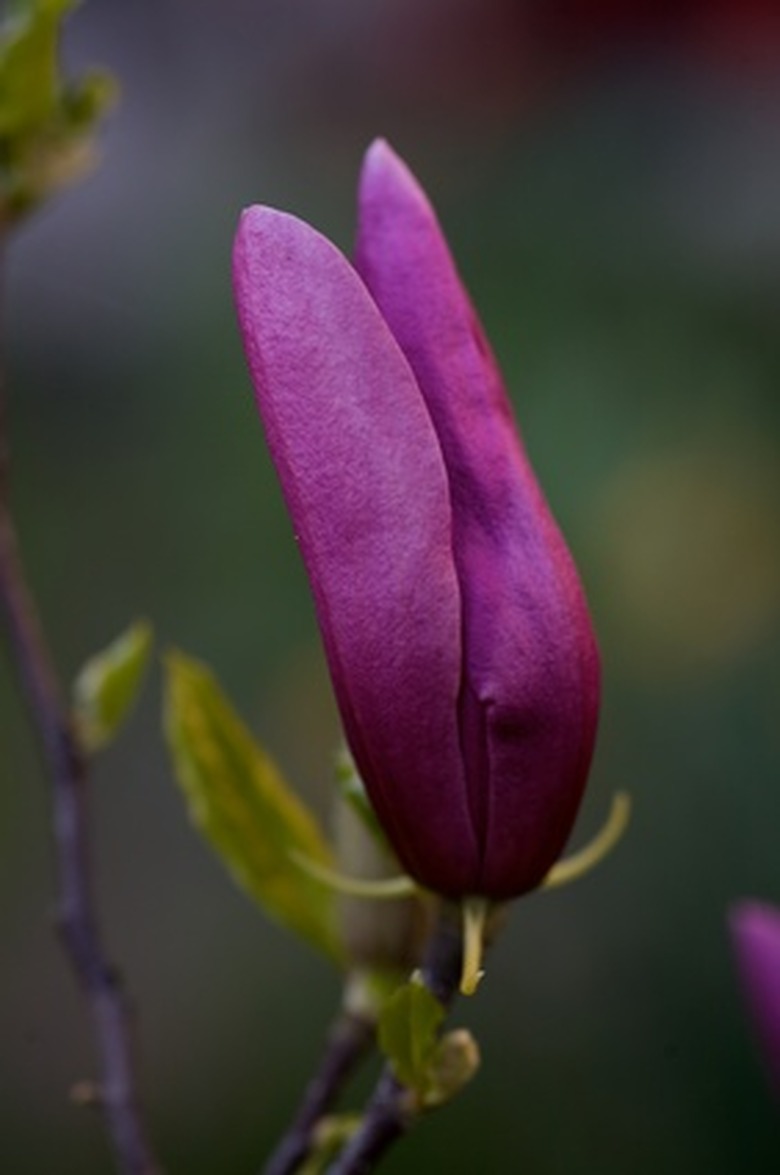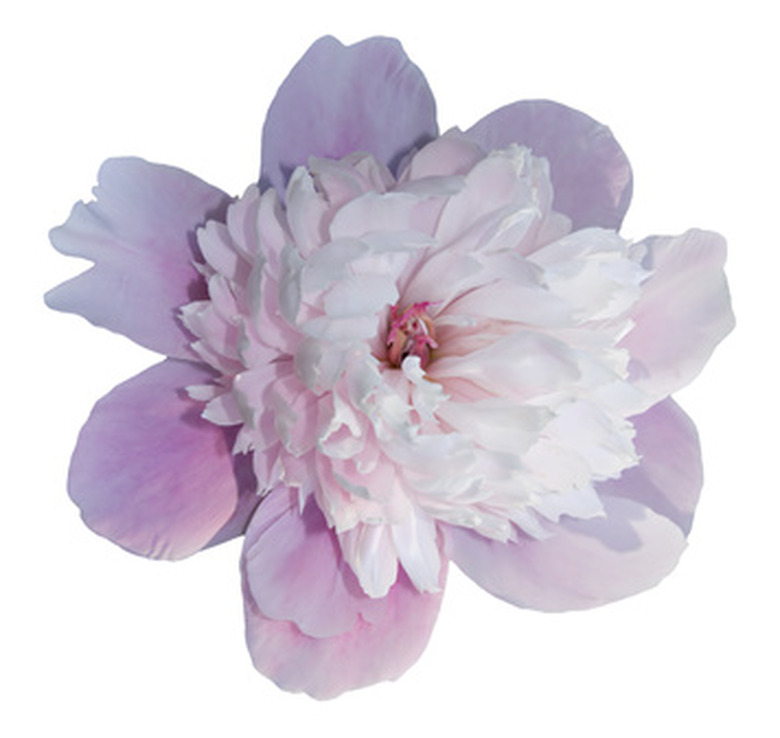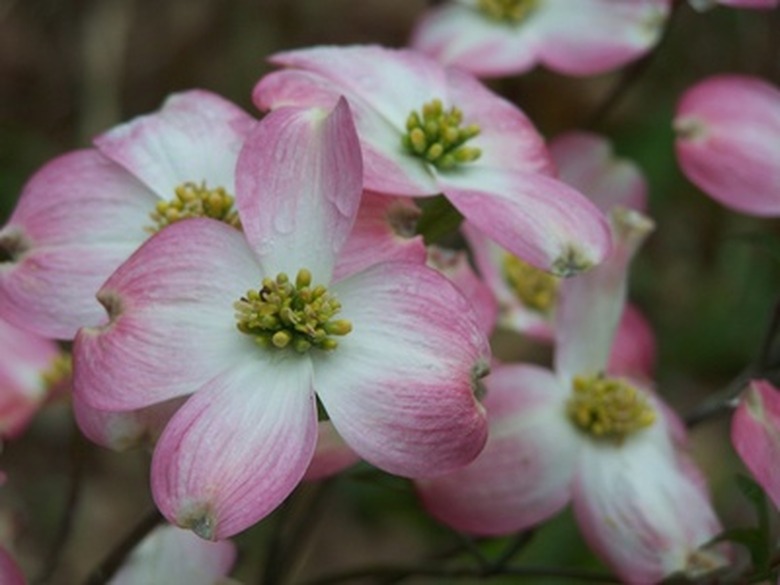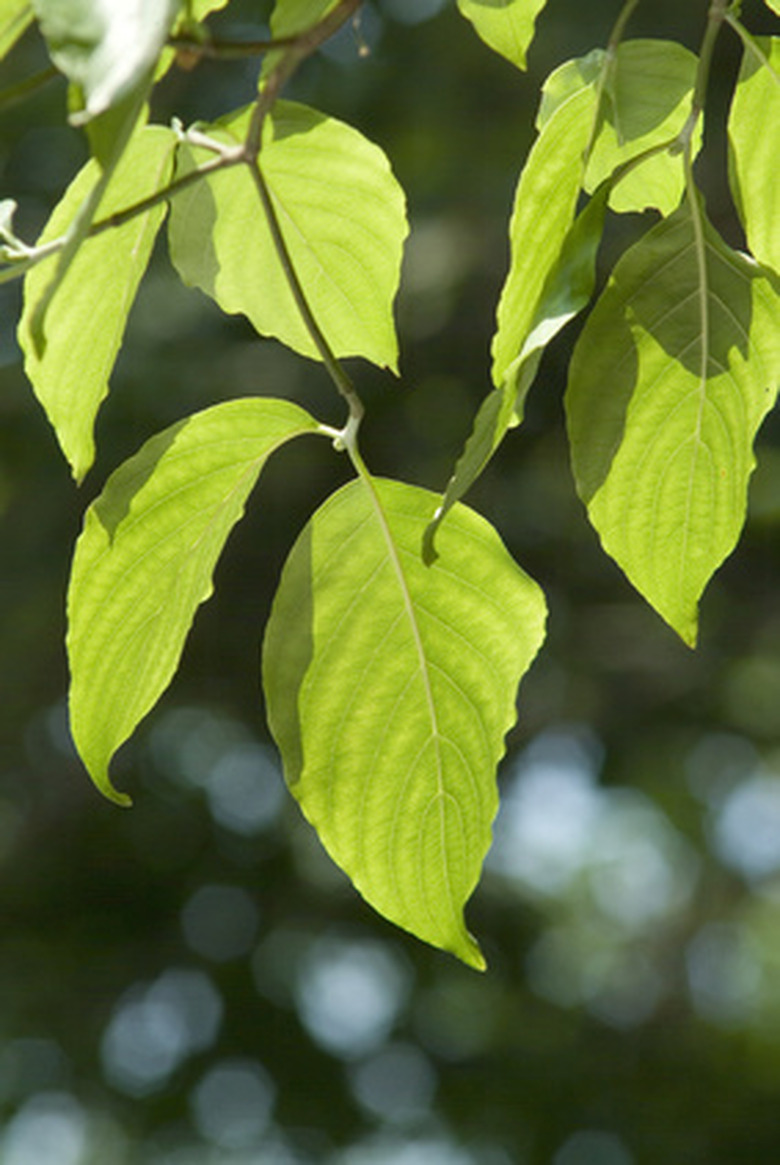How To Identify A Purple Flowering Tree In The Spring
Trees with purple flowers aren't as abundant as those with pink or white flowers. The most common purple flowering trees include the Royal Empress, Muskogee Crape Myrtle, Jane magnolia, lavender twist weeping redbud, Eastern redbud, peony Shimadaijin, Ann magnolia and Satomi dogwood trees. Spring is certainly the best time to identify purple flowering trees, because you'll be able to study not only the flowers, but also the leaves on the tree to identify it.
Step 1
Identify the location in which the purple flowering tree is growing. In climates with mild winters, you may find the Muskogee Crape Myrtle tree. Most other purple flowering trees thrive in regions where temperatures can drop below 0 degrees Fahrenheit in winter.
Step 2
Consider the purple flowering tree's size. The tallest purple flowering trees include the Royal Empress, which can reach 40 to 50 feet tall at maturity, and the Eastern redbud tree, growing up to 30 feet tall on average. The tree peony is one of the smallest, reaching only 4 to 5 feet tall.
- Trees with purple flowers aren't as abundant as those with pink or white flowers.
- The tallest purple flowering trees include the Royal Empress, which can reach 40 to 50 feet tall at maturity, and the Eastern redbud tree, growing up to 30 feet tall on average.
Step 3
Evaluate the shade of purple of the blooms. The Royal Empress has purple flowers with white around the edges, while the Jane magnolia's blooms are pinkish-purple on the outside and bright white inside. Satomi dogwoods have pinkish-purple blooms, while Ann magnolias have purplish-red flowers.
Step 4
Look at the size of the flowers to identify the tree. For example, the tree peony has 10-inch-wide or larger individual blooms and the magnolias have 7- to 9-inch-wide flowers, while the Satomi dogwood has smaller clustered flowers.
Step 5
Determine the shape of the blooms. For instance, the Royal Empress and Muskogee Crape Myrtle have trumpet-shaped flowers, while the Satomi dogwood, lavender twist weeping redbud and Eastern redbud have star-shaped blooms.
- Evaluate the shade of purple of the blooms.
- For example, the tree peony has 10-inch-wide or larger individual blooms and the magnolias have 7- to 9-inch-wide flowers, while the Satomi dogwood has smaller clustered flowers.
Step 6
Identify the purple flowering tree by whether its blooms are fragrant. For example, the Royal Empress has heavily fragrant blossoms, while the Ann magnolia's flowers are lightly scented.
Step 7
Examine the size and shape of the leaves. The Eastern redbud and Satomi dogwood both have leaves that are not lobed and have smooth edges, but the Eastern redbud's leaves are heart-shaped. The Royal Empress has huge, 1-foot-wide leaves forming a dense canopy.
Step 8
Identify purple flowering trees by whether they produce any fruits. The Satomi dogwood produces pinkish-red fruits in autumn. The lavender twist weeping redbud has pea-pod-like brown fruits that are 2 to 3 inches long, developing in October and remaining on the tree through winter.
- Identify the purple flowering tree by whether its blooms are fragrant.
- The Eastern redbud and Satomi dogwood both have leaves that are not lobed and have smooth edges, but the Eastern redbud's leaves are heart-shaped.
Step 9
Look at the tree's form to identify it. The Satomi dogwood has a broad, sweeping form with horizontal spreading branches, the lavender twist weeping redbud has an umbrella-shaped crown with weeping, twisted branches, and the Eastern redbud has a rounded canopy. The tree peony is upright and rounded, the Ann magnolia has a pyramidal to rounded canopy, the Royal Empress has a wide rounded or slightly pyramidal canopy, and the Muskogee Crape Myrtle is upright with an upward-sweeping, rounded crown. The Jane magnolia has a low-branching, rounded or oval crown.
References
- Virginia Cooperative Extension: Flowering Trees
- "The Trees of North America"; Alan Mitchell; 1987
